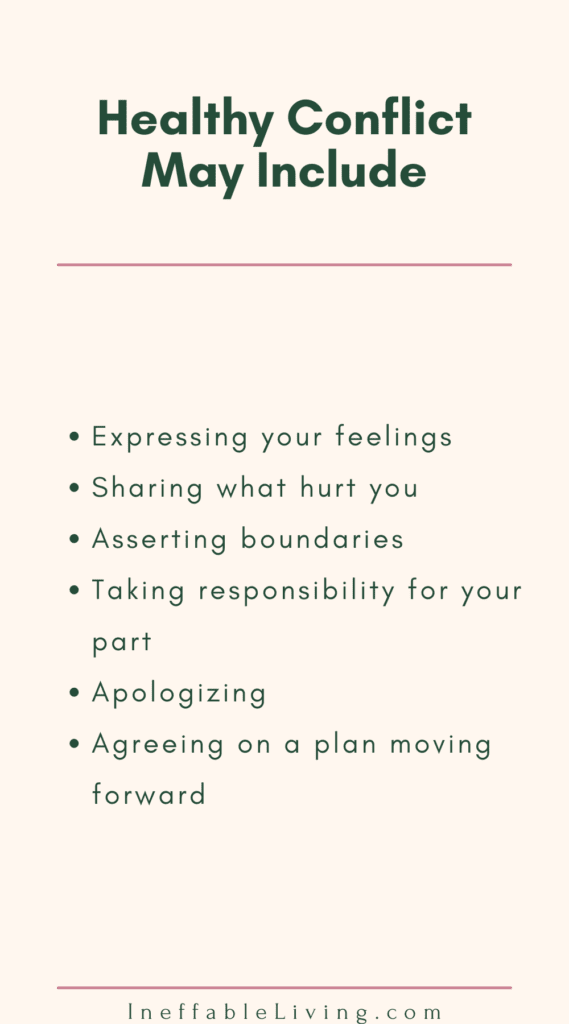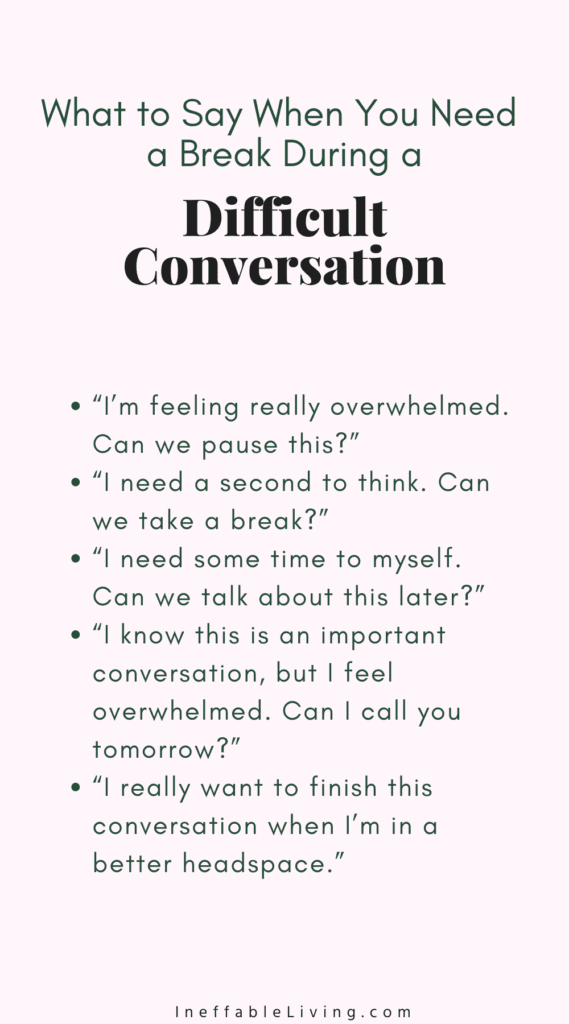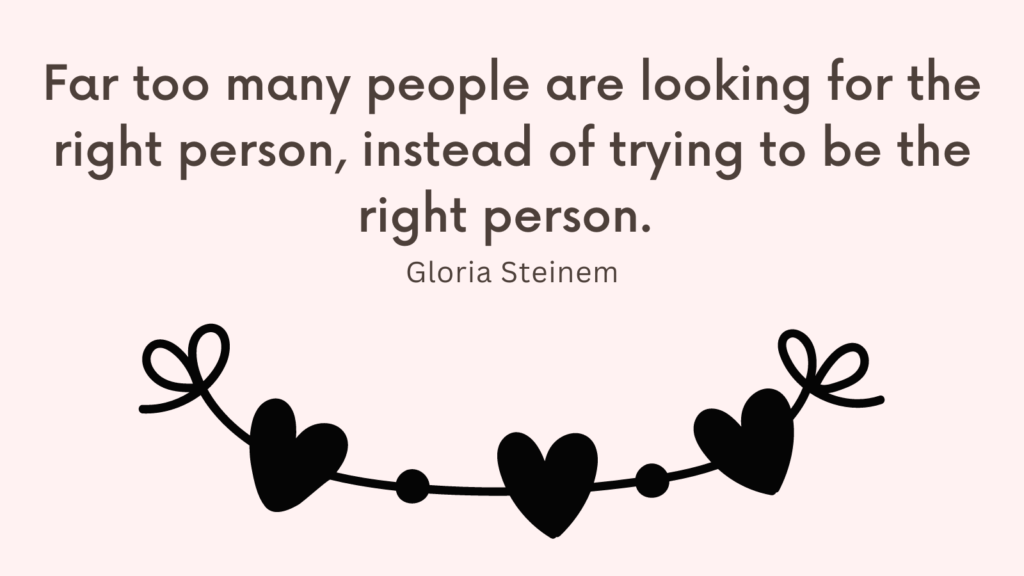Today you’re going to learn how to save your marriage through effective steps for conflict resolution in marriage
Marriage is a union between two different individuals who have their own opinions, values, and personality quirks.
So it’s no wonder that even in happy marriages, the couple is confronted with marital conflicts, some are minor while others are overwhelmingly intense.
- The Stages of a Romantic Relationship
- Why Do You Need To Save Your Marriage?
- Myths About Marriage
- Conflict Resolution In Marriage
- Perpetual Problems vs. Solvable Problems
- The Key To Conflict Resolution
- 5 Steps to Solve Your Solvable Problems
- 5 Steps to Overcome Your Perpetual Conflicts
- Conflict Resolution In Marriage PDF
The Stages of a Romantic Relationship
Most divorced singles were extremely happy and in love when they got married. They didn’t enter with a goal of divorcing.
So what happened?
The answer lies in the misunderstanding most people have about the nature of love and relationships.
In fact, most people believe that love is something that happens to you and that there’s nothing you can do about it. While this can describe the first stage of a relationship, it fails to take into consideration that relationships are never static. They go through a second and more important stage.
Let’s look at the two stages of a relationship.
Stage One: The Obsessive Stage of Love
There has been extensive scientific research done on the obsessive stage of love or the “in love” stage. In her book Love and Limerence, Prof. Dorothy Tennov concluded that the average lifespan of this stage of love is two years.
During this stage, we live under the illusion that the person with whom we are in love is perfect, at least for us. We’re unable to see any flaws in him, even when our friends and family point them out for us. Our differences are minimized or denied altogether.
We believe that nothing else matters and that our love is going to conquer it all.
This stage doesn’t require much effort. One doesn’t work hard to fall in love. It just happens.
Which is true, but only for the initial stage of the relationship.
Wait … There’s a second stage of love?
While most people understand the first stage of love, they usually have no comprehension of stage two or the awareness that there’s a stage two, to begin with.
Most people get married or start living together during the first stage of love.
When the “In love” stage is over, and with no comprehension of the nature of love and how to move successfully from stage one to stage two, more than half of these couples end up in a divorce and more than sixty percent of those who remarry will experience a second divorce.
Related: The 3 Different Relationship Attachment Styles
Stage Two: The Conscious Stage of Love
During this stage, love and passion must be fed and nurtured. It won’t continue to flow simply because you are in a relationship.
When the obsessiveness of the first stage fades, you begin to recognize that there are other important pursuits in life other than pursuing each other.
The differences in personality and interests, you hardly saw before, become very obvious. The illusion of perfection ends and you begin to wonder how you could have been so blind to their flaws.
You begin to focus on yourself and realize that your partner is no longer meeting your needs. You begin to request and then demand, and when your demands are not being answered, you either withdraw or lash out in anger. This pushes your partner further away and you both stop expressing much love.
Can such relationship survive?
The answer is yes!
But only if the couple learns the nature of love and how to express it in a language the other person can receive.
Conscious love is intentional. It requires thought and action. When it is expressed in a language each partner understands, the love will grow and deepen.
You succeed in making the transition from obsessive love to the deep, settled love.
Related: How to Stay in Love? 50 Secrets of Happy Relationships
Why Do You Need To Save Your Marriage?
About 40 to 50 percent of married couples in the United States divorce. And the divorce rate for second marriages is even higher.
Because of the high chance of getting divorced, it makes sense for all married couples, including those who are satisfied with their marriage, to work on strengthening their relationship.
Many people don’t realize how important it is to save their marriage until it’s too late.
Some people may think that getting a divorce is no big deal, and some might see it as trendy.
However, undergoing a divorce can be damaging, not only for the couple, but for the children and close family and friends.
In fact, an unhappy marriage can increase heart disease and blood pressure along with doubling the risk of depression and anxiety disorder later in life.
On the other hand, people who are happily married live longer, healthier lives than those who are unhappily married.
Happily married couples also tend to be more health-conscious than others, they keep after each other to have their regular checkups, exercise, and eat nutritiously.
Myths About Marriage
The idea that you can save your marriage just by learning how to communicate more sensitively is hardly the only misconception about happy marriages.
There are many other myths that can not only lead couples down the wrong path but also convince them that their marriage is a hopeless case.
Among these misconceptions:
1. Personality Problems Ruin Marriages.
We all have issues we’re not totally rational about, but they don’t necessarily intervene with marriage.
In fact, the key to a happy marriage isn’t having a “normal” personality but rather, “finding someone with whom you mesh” and you find yourselves able to accommodate each other’s strange side with care and respect.
For example, someone who hates having a boss would be happier with someone who treats him like a partner and doesn’t try to boss him around, than he would have been with an authoritarian woman.
2. Common Interests Keep You Together.
Common interests strengthen the marriage depending on how you interact while pursuing these interests.
A couple who love photography can enjoy taking pictures together and praising each others’ skills.
Another couple may equally share a love for photography but not the same mutual respect.
They might start arguing which mode is better and how much light exposure is ideal. It is hard to see how perusing their common interest can benefit their marriage.
3. Reciprocating Keeps Your Marriage Strong.
Some people believe that reciprocating positive words and deeds are what keeps marriages from falling.
When they meet a kiss with a kiss and a smile with a smile, and when they reciprocate helping each other and so on.
However, this quid pro quo usually operates in unhappy marriages where each spouse feels the need to keep scores of who did what for whom.
This can create tension and hostility between the couple.
4. Avoiding Conflict Ruins Your Marriage.
“Tell it like it is” isn’t ideal for all marriages.
Many couples lead a happy marriage even though they often ignore conflicts and go on as if nothing happened, and still be satisfied with their marriage.
Couples simply have different styles of conflict. Some fight a lot, some avoid conflicts at all costs and some are able to talk out their differences and find a compromise. No style is better than the other as long as it works for both people.
However, having a different style of conflict can be a problem such as when one spouse wants to talk out a conflict while the other spouse wants to avoid it and act as if nothing happened.
Conflict Resolution In Marriage
Conflict Resolution In Marriage: Types of Marital Conflict
Conflicts usually fall into one of two categories; conflicts that can be resolved, or perpetual ones that will be part of your lives forever in some form or another.
Understanding the nature of your marital conflicts is essential to identify your disagreements and define your coping strategies.
Category 1. Perpetual problems.
Couples can spend years arguing over the same issue.
It could be one spouse who wants to have a baby when the other one isn’t ready yet or a spouse who wants sex far more frequently than the other spouse, or a husband who rarely does his share of the chores and so on.
In happy marriages, despite their differences, couples remain very satisfied with their marriages.
They’ve come up with a way to deal with these problems so it doesn’t overwhelm them.
However, in unstable marriages, these perpetual problems eventually kill the relationship.
Couples would have the same conversation about the same problem over and over without resolving anything.
They feel increasingly frustrated and hurt.
The good news is that there’s a way out of these endless arguments.
In fact, perpetual problems are usually caused by some profound difference between you that can be addressed before you can get out of this gridlock.
Related: Are You And Your Partner Romantically Compatible? (Attachment Style Theory)
Category 2. Solvable problems
Although solvable problems might sound relatively simple compared to the perpetual problems, they can cause a great deal of pain and frustration between the couple.
In fact, despite being solvable, these problems don’t usually get resolved.

Perpetual Problems vs. Solvable Problems
When the couple is so entrenched in conflict, it’s hard to tell which type of disagreement they’re having –perpetual or solvable.
Solvable problems are less painful and intense than perpetual ones. That’s because when the couple argues over a solvable problem, their focus is on a particular situation without underlying conflict.
For example, a wife might insist that her husband drives too fast while he assures her that he has never had an accident and argue that she’s overacting. They’ve been arguing about this for years. She thinks that he’s selfish and uncaring, while he thinks that she doesn’t trust him.
This dispute constitutes a perpetual problem they’ll probably never resolve, simply because their disagreement is rooted back to deeper conflicts between them.
They’re not arguing about speed, they’re actually arguing about bigger issues such as trust and selfishness.
Only when they understand the deeper meaning of their arguments, that they’ll be able to manage it effectively.
On the other hand, another couple who commute every morning they commute together to work might argue over the same issue. The husband might argue that he has to speed because it takes her forever to get ready, while the wife argues back that she takes long because he showers first and takes forever, they keep going back and forth trying to pinpoint the bad guy.
However, this problem occurs only when they are going to work and it doesn’t interfere with other areas of their lives.
Their arguing isn’t about trust or selfishness, it’s simply about the morning routine.
Once they put the blame aside, they can work out a schedule that will get them to work on time without having to speed drive.
If, on the other hand, this problem doesn’t get resolved and each spouse becomes entrenched in their positions, they might grow increasingly resentful and the conflict could evolve into a perpetual one.
The Key To Conflict Resolution
The key to coping effectively with conflicts, whether they were solvable or perpetual, is accepting your spouse’s personality.
In fact, it’s hard to accept advice when you don’t feel understood or accepted.
So before asking your spouse to make a change, make sure you make them feel that you are understanding. It’s also the only approach that can make people change.
When people don’t feel they’re accepted as they are, but rather feel criticized and unappreciated, they become unable to change and become defensive.
#1. Acknowledge That No One Is Ever Right
It’s only natural to make the error of believing that the conflict is all your spouse’s fault. However, in all arguments, whether they were solvable or perpetual, no one is ever right.
There are always two subjective realities, simply because your perspective on what happened and why, are likely to be very different from your spouse’s.
This is why only when you become able to respect each other’s point of view, that you’ll be able to break the pattern and admit some role, however slight at first, in creating the conflict.
#2. Work On Strengthening Your Fondness And Admiration
When it’s hard for you to accept each other’s perspective, strengthening your fondness and admiration for each other can help you learn to view your spouse’s shortcomings as amusing part of the whole package of your spouse’s character.
Strengthening your fondness and admiration can be done by remembering all the reasons that made you decide to get married in the first place, but also acknowledging the characteristics that appeal to you most and meditating on them or simply keeping a journal where you write down every day three things you appreciate about your partner.
Related: How To Save Your Relationship From A Breakup? 5 Steps To Strengthen Your Relationship
#3. Let Go Of Your Grudges
When couples are unable to forgive each other for past differences, it’s easy to hold a grudge that might prevent your marriage from going forward happily.
Forgiving can be hard to do, but it’s definitely worth it.
#4 Start Marriage Counseling
Marriage is difficult and requires more than just exchanging vows and wearing rings. It’s a commitment you give to each other to be there in good and bad. Thus, it’s important to constantly work on your relationship and make time for your spouse. Communication is crucial even in situations that feel impossible to fix.
With marriage counseling, you’ll get a deeper understanding of your relationship’s dynamic, get an impartial sounding board, listen to your partner’s perspective, and resolve marriage roadblocks. To do it effectively, you need a boost and encouragement from a third party that is a specialist.
Therefore, you can explore the San Francisco marriage counseling sessions with the best-known couples counselors in the area that helped many couples restore intimacy and repair their marriages. You can also do these couples counseling sessions online from the comfort of your home and proceed to some interesting exercises to improve your marriage.

5 Steps to Solve Your Solvable Problems
The steps to solving solvable problems can be quite easy since it comes down to having good manners.
This means treating your spouse with the same respect you offer to a guest. We all pretty much have the skills already, but we just get out of the habit of using them in our marriage.
The approach to solving solvable problems can be summarized into five main steps:
- Soften your startup
- Learn to make and receive repair attempts
- Soothe yourself and each other
- Compromise
- Be tolerant of each other’s faults
Step 1: Soften Your Startup
The way you bring up the conflict to resolve can make a huge impact on how things will end up.
A harsh startup that begins with criticism and contempt will likely lead to more intensive fighting and eventually emotional distance and loneliness that lets the marriage wither.
On the other hand, a gentle startup where a spouse makes a complaint that doesn’t contain criticism and contempt is more likely to produce a result and resolve the conflict. It’ll also leave the couple feeling positive about themselves and their marriage.
This positivity inspires a more optimistic attitude in solving upcoming conflicts.
If you’re angry with your spouse, try taking a deep breath and calming down before leaping in.
Remind yourself that if you want to resolve this conflict, you have to be gentle.
Here are some suggestions to help soften your startup:
1. Complain but don’t blame
Make your complaint confrontational without attacking your spouse, like saying “You didn’t take the trash out, we agreed it was your turn to do it. I’m really upset about this.”
Here you’re simply complaining about the situation, not your spouse’s character.
2. Use “I” statements instead of “You” statements
Statements starting with I are less likely to be critical or make the listener defensive and are gentler than their “You” counterparts.
Like saying “I would like it if you’d listen to me” instead of “You are not listening to me.”
In other words, you’ll be focused on how you’re feeling rather than on accusing your spouse.

3. State the facts, don’t evaluate or judge.
Instead of blaming and judging, describe the situation as it is. Instead of “You never do your part of the chores,” say, “I seem to be the only one cleaning the house today.”
This will help your spouse consider your point of view rather than feeling attacked.
4. Be clear and polite.
Don’t expect your partner to read your mind. Make polite, clear requests.
Instead of “The room is a total mess,” say, “I’d appreciated it if you would pick up your stuff before you leave the room.”
5. Be appreciative.
If your spouse has handled this situation better in the past, then start your request with appreciating what he did right.
Instead of “You never spend time with me anymore,” say, “Remember when we used to stay in bed every Sunday morning? I loved spending time alone with you. Let’s do more of that.”
6. Don’t wait too long before bringing up an issue.
It’s hard to be gentle when you’ve been holding back for too long.
Related: 5 Basic Emotional Needs of Men and Women
Step 2. Learn To Make And Receive Repair Attempts.
When your discussion starts off on the wrong foot, or you find yourselves in an endless negative spiral, you can prevent a disaster if you know how to stop.
This can be done through repair attempts.
A repair statement, such as “Hey, I’m sorry”, can be enough to deescalate the tension, and make the couple more receptive to find a compromise.
Moreover, what makes a repair attempt successful, isn’t how eloquent it is, but rather whether or not it gets through to the spouse, and this happens when their marriage hasn’t been clouded by a lot of negativity.
How to get the message through?
One of the reasons why couples miss each other’s repair attempts, is that they usually are delivered in a negative way, like yelling “Can we take a break?”, or making grumbling sound.
When you focus on the tone of your spouse rather than the words, you could miss his message which is “Stop! This is getting out of hand.”
The best way to get your repair attempt through is to make is formal and direct.
The following phrases are examples of repair attempts you can use with your spouse to deescalate the tension.
- Did I do something wrong?
- I’m getting scared.
- I’m feeling defensive. Can you rephrase that?
- I don’t feel like you understand me right now.
- I need things to be calmer right now.
- Tell me you love me.
- Can I have a kiss?
- How can I make things better?
- Let me start again in a softer way.
- Let’s compromise here.
- I never thought of things that way.
These phrases might sound unnatural to you right now.
But over time, they’ll come easily to you and you’ll be able to adjust them to suit your style of speech and personality.
Learning how to make and receive repair attempts, will help you dramatically improve the effectiveness of your problem solving and increase positivity in your marriage.
Step 3. Soothe Yourself And Each Other.
In unhappy marriages, discussing conflicts can be emotionally and physically overwhelming for both spouses.
You’re in distress. Your heart is pounding and you’re holding your breath.
This makes it hard for you to give or receive a repair attempt that will deescalate the increasingly growing tension between you and your spouse.
When you’re in this condition, it’s hard to focus on what your spouse is saying, and the likelihood that the problem can be resolved ceases.
To cope with this problem, try the following:
1. Self-Soothing.
When you find yourself starting to feel overwhelmed, the first step to soothe yourself is to stop the discussion.
Let your spouse know that you’re feeling overwhelmed and need to take a break.
Take a break for at least twenty minutes. During that time do something soothing and distracting like exercising or meditating. Avoid thoughts of righteous indignation like “I don’t have to take this anymore,” or thoughts of innocent victimhood like “Why is she always picking on me?”.
You might be cynical about meditating and relaxation exercises, and find yourself unable to see how closing your eyes and thinking about something soothing like sitting by a lake or walking into a garden can solve your marital problems.
However, once you feel soothed, your voice gets softer and you find yourself better able to work on your conflicts.
2. Soothing Each Other.
Calming each other can be quite difficult if you’re both feeling angry or hurt.
This is why you need to soothe yourself first.
Soothing your spouse can be a form of reverse conditioning.
This means that when you frequently have the experience of being soothed by your spouse, you’ll stop seeing him or her as a trigger of stress and instead associate him or her with feeling relaxed. This, in order, increases positivity in your marriage.
There are many ways to calm your spouse.
Giving a massage can be a perfect antidote to a stressful discussion. But what matters most, is that you find the method you enjoy best.
Related: How to Get More Affection from Your Relationships?
Step 4. Compromise
In a loving relationship, it doesn’t work for either of you to get things all your way, no matter who’s right.
Therefore, compromising is the only way to resolve marital problems.
However, negotiation is only possible after you follow the steps above.
Softening your startup, repairing your discussion, and keeping calm, will get you into a positive mode that will allow you to compromise on the issue.
Before trying to resolve a conflict, remember that for a compromise to work, you’ll have to keep an open mind to your spouse’s opinions and desires.
You don’t have to agree with everything your spouse believes or says, but you need to openly consider his or her point of view, otherwise, your discussion will never get anywhere.
Once you’re ready, compromising would be simply a matter of talking out your differences and preferences while preventing your discussion from becoming overwhelmingly negative.
Related: How to Stay in Love? 50 Secrets of Happy Relationships
Step 5. Be Tolerant Of Each Other’s Faults.
Couples make the mistake of believing that if only their spouse was smarter, neater, sexier, richer…, all of their problems would disappear.
The truth is, resolving conflicts isn’t about one person changing, it’s about compromising and finding a common ground that can accommodate each spouse’s needs.
Therefore, until you accept your spouse’s flaws and shortcomings, you won’t be able to negotiate a solution successfully.

5 Steps to Overcome Your Perpetual Conflicts
Differences like wanting to have children while your spouse doesn’t, or wanting to raise your kids Christians while your spouse is an atheist…
These differences can create perpetual problems that make couples spend years arguing over the same issue.
Happily married couples have come up with ways to deal with these differences so it doesn’t overwhelm them.
However, in unhappy marriages, couples would have the same conversation without resolving anything.
Eventually, these perpetual problems become a source of frustration and can kill the relationship.
The good news is that there’s a way out of these gridlocked conflicts. You can learn to cope with these differences.
In fact, the goal isn’t to resolve the gridlocked problem, but rather to be able to talk about it without hurting each other.
In other words, you learn to live with the problem peacefully.
Understand The Cause.
The first step in learning how to cope with perpetual problems is to understand its cause.
Whether the issue was serious like having a child, or trivial like which way to fold napkins, a perpetual problem is a sign that the spouse has dreams that aren’t being respected by the other spouse.
These dreams are hopes and wishes that are part of your identity and give purpose and meaning to your life.
The following are examples of dreams people can have:
- Freedom
- Adventure
- Unity with nature
- Spirituality
- Having a sense of power
- Healing and getting over past hurts
- Quietness and peace
- …
While none of these dreams are inherently bad for a marriage, they still can cause problems when they’re not respected by your spouse.
As a result, you may have open battles with your spouse over the issue, or it may go hidden and be expressed symbolically.
For example, when one spouse used to go out for dinner with their family every Sunday night in their childhood, as a grown-up, he or she might want to go out every Sunday night with his or her spouse.
The issue has to do with something deeper than a restaurant meal. Something, his or her spouse might not be able to acknowledge.
The approach to solving perpetual problems can be summarized into five main steps:
- Become A Dream Detective.
- Work On A Gridlocked Marital Issue.
- Soothe Each Other.
- End The Gridlock.
- Say Thank You.
Step 1. Become A Dream Detective.
Couples often hide their deep personal dreams in order to make the marriage work. They may even see their own desires as “childish” or “impractical”.
However, this won’t change the fact that the dream is something you long for, and unless it is respected, conflict becomes inevitable.
For example, a wife might complain about her husband’s lack of order, on the other hand, the husband thinks his wife is too controlling. He might have a problem with authority because he grew up with parents who were very strict. Challenging authority and thinking for himself is very important to him.
Step 2. Work On A Gridlocked Marital Issue.
After uncovering some hidden dreams, choose a particular gridlocked conflict to work on.
Explain to your spouse where this dream comes from. Tell him the story behind this dream and why it’s so meaningful to you. Understand the dreams that are fueling the conflict, is the first step to be able to talk about them.
Keep in mind that your goal isn’t to solve the problem, but to simply understand why each of you feels so strongly about the issue.
When you listen to your spouse’s position about the conflict and what dreams are behind it, suspend judgment.
Even if your spouse’s dream clashes with yours, don’t take it personally. Show interest in learning more about it, even if you don’t share it.
Step 3. Soothe Each Other.
Discussing your differences can be stressful. When it gets overwhelming, try to take a break to soothe yourself.
Once you’re ready to talk again, make sure you soothe your partner too. (See Step 3 in Solve Your Solvable Problems)
Related: The Art of Validation: How to Comfort and Support Someone Without Giving Advice?
Step 4. End The Gridlock.
The goal here isn’t to solve the conflict, rather remove the hurt so the problem will cease being a source of great pain.
The goal is to make peace with the issue by accepting your differences in order to discuss the problem amicably, and eventually, compromising to accommodate each other’s dreams.
To find common ground, you need to identify the aspects of the issue that you absolutely cannot give on without violating your basic needs or core values. You also need to identify the aspects of the issue where you can be flexible because they’re not so important to you.
Try to make the first category as small as possible and the second one as large as possible, and work together to come up with a temporary compromise.
Remember that goal isn’t to solve the problem but to help you both live with it more peacefully.
Below is an example of a gridlocked problem and how to find a compromise:
Gridlocked problem: the wife wants her husband to be neater and clean more after himself, and the husband wants her to leave him alone.
The dreams within the conflict:
- The wife: A sense of order at home
- The husband: A sense of freedom in his own home
Nonnegotiable areas:
- The wife: She can’t take on dirty dishes or a dirty bathroom.
- The husband: He can’t take on having to clean up his papers right after he’s finished with them.
Areas of flexibility:
- The wife: She can live with some clutter as long as there isn’t any dirt.
- The husband: He can cope with cleaning dishes and the bathroom as long as he doesn’t have to straighten up all the time.
Temporary compromise: They’ll both take responsibility for keeping the kitchen and the bathroom clean, and she won’t bother him about his clutter.
Step 5. Say Thank You.
Dealing with gridlocked problems can be stressful.
The goal here is to increase positivity in the marriage by counting your blessings and appreciating each other.
You can do that by using a simple statement like “I really like..:
- Your strength
- How sensitive you are to me
- Your ability to read me
- The way you let me be myself
- How safe I feel with you
- Your tenderness and warmth
- How well you know me
- …
Having conflicts in marriage, whether they were solvable problems or perpetual ones, is inevitable.
But you’ll know you’re making progress when you’re feeling less stressed out discussing your differences, and when these conflicts no longer loom so large that it crowds out the love and joy in your marriage.
Related: How to Be More Effective in Relationships (Effective Communication)
Conflict Resolution In Marriage PDF

References
The Book: The Seven Principles for Making Marriage Work: A Practical Guide from the Country’s Foremost Relationship Expert by John M. Gottman
- Signs a Marriage Cannot Be Saved (verywellmind.com)
- Repair is the Secret Weapon of Emotionally Connected Couples (gottman.com)




Comments are closed.